Can I Upload Itunes Backup to Icloud
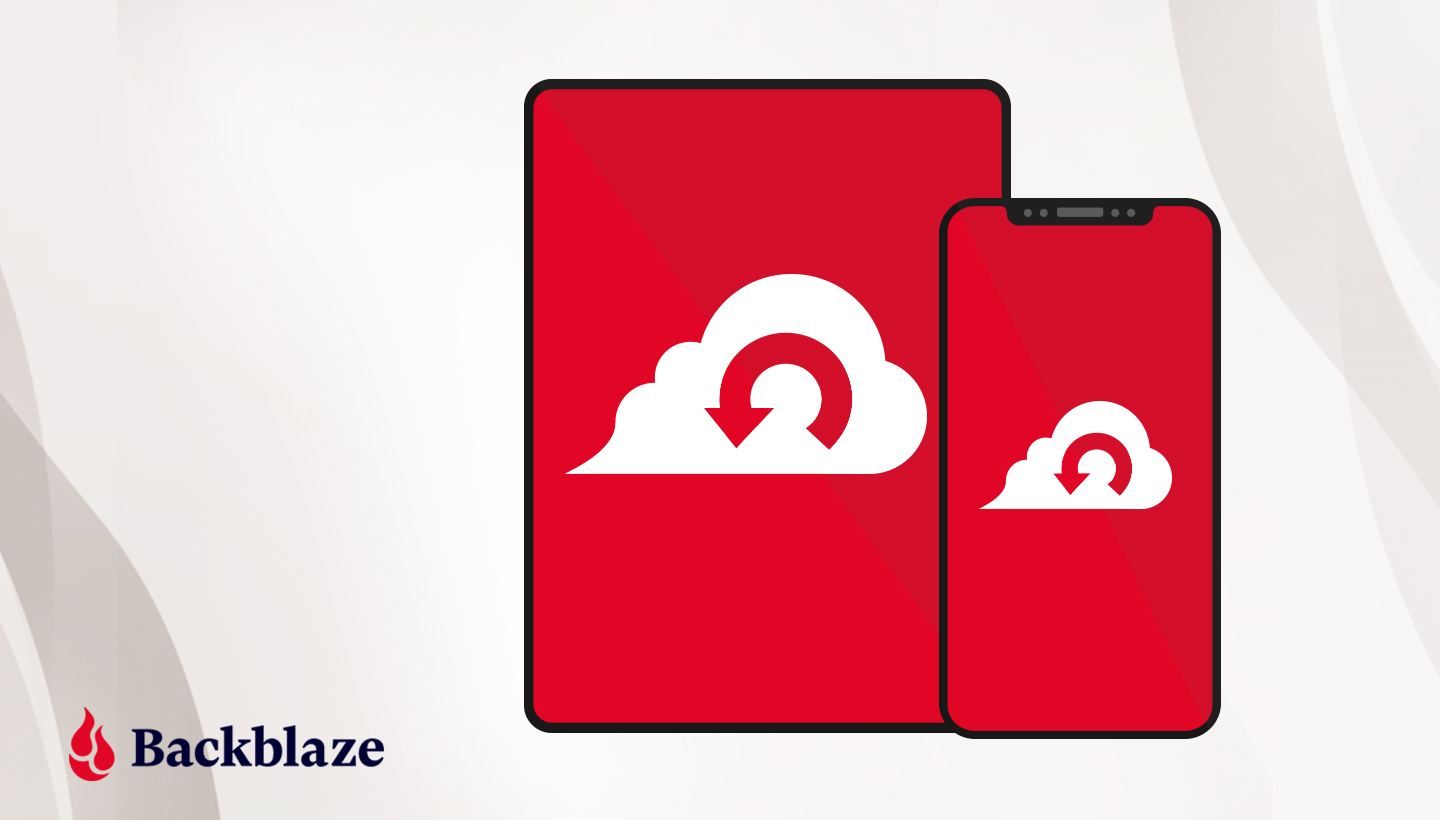
This blog post was originally published in 2016. Since so, Apple has rolled out a number of updates to its products and how their data is backed upwardly, and so we're sharing an update to this post with the latest data.
Apple recently released the newest edition of their iPhone, boasting a new storage chapters option of 1TB. That'south a big upgrade for anyone looking to go the latest version, and all that extra infinite is certain to exist filled up apace with app data, photos, videos, and more. You wouldn't desire to accidentally lose whatever of that important information, and so it'southward important to make sure you treat backups for your phone with as much consideration as you do for your computer. Not but that, but software upgrades can also have the potential to wreak data havoc, then keeping consistent data backups ensures all your iPhone data stays condom and secure in the cloud.
If you're using iCloud Backup or iTunes to dorsum upwards your iPhone, iPad, or iPod bear upon, read this post to sympathise how those backups work, and larn what else yous tin do to protect your data.
How to Dorsum Upwardly Your iPhone to iCloud
Apple has tried to make backing upwards less of a chore with iCloud Backup. This iOS characteristic lets your iPhone, iPad, or iPod touch support its contents to the cloud. If you're looking for the near frictionless way to support your devices, this is it. The nice thing about iCloud Backup is that you set it and forget it.
iCloud Backup happens automatically when your device is charging, locked, and is continued to Wi-Fi. In one case you've configured your device for iCloud Backup, y'all should merely exist able to rely on the backups to happen periodically when you're charging.
How to Use iCloud Backup on Your iPhone, iPad, or iPod Touch
- Become to Settings.
- Tap your name at the meridian, then choose iCloud.
- Tap iCloud Backup.
- Tap Support Now. Stay connected to Wi-Fi until the procedure ends.
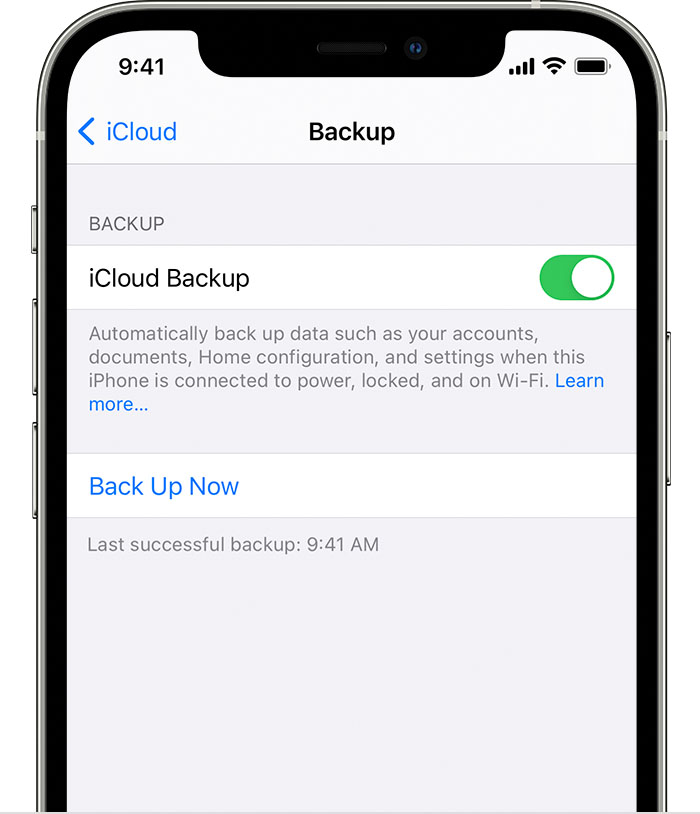
How to Bank check Your iCloud Backup
Make sure to stay connected to your Wi-Fi network until the fill-in is done. Here's how to check your backup'due south progress:
Using iOS 11 or subsequently and iPadOS:
- Get to Settings.
- Tap your proper name at the peak, and then choose iCloud.
- Tap Manage Storage.
- Tap Backups.
Using iOS 10.3:
- Get to Settings.
- Tap your proper name at the top, and then choose iCloud.
- Tap the graph that shows your iCloud usage, then tap Manage Storage.
- Select your device. iOS will evidence you lot details about when it was terminal backed up, and the backup file size.
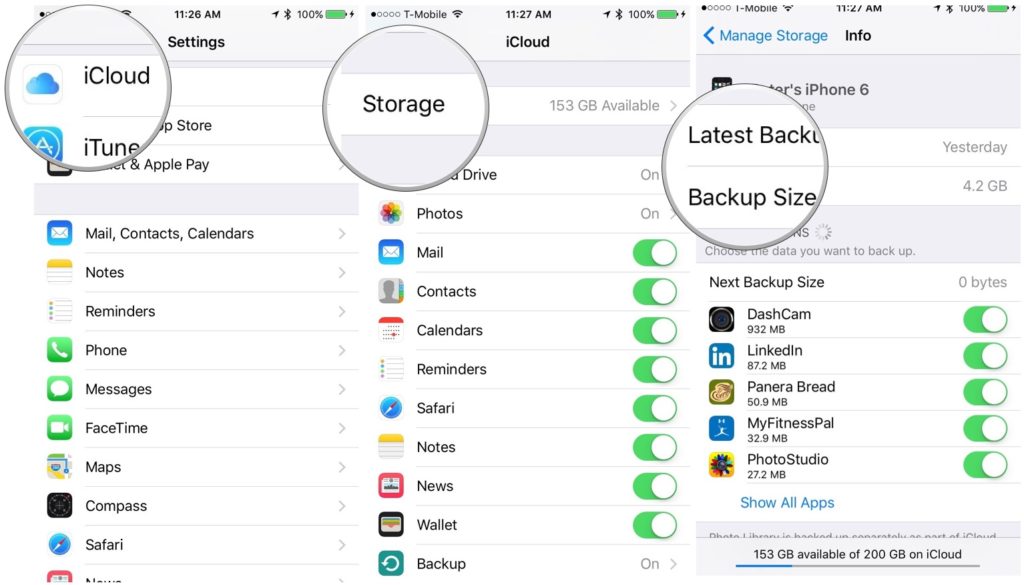
How Does iCloud Fill-in Piece of work?
iCloud Backup lets you restore your device from almost anywhere. It also makes upgrading a breeze. When yous ready a new iOS device, for instance, the arrangement will enquire yous if you want to restore from an iCloud backup.
At that place is a downside to iCloud Backup that you need to exist aware of. Information technology's very dependent on a specific set of actions to work:
- Your device needs to be connected to a power supply.
- Your device needs a Wi-Fi connectedness (and needs to be continued to the net).
- Your device needs to be locked.
- You lot need to accept enough space in iCloud to store the backup.
This last item is the killer. Apple but gives y'all 5GB of free space with the basic iCloud account. If you take a lot of stuff on your iOS device or in the cloud, it'south trivially easy to exceed your free 5GB iCloud assart, which ways your backups won't happen unless yous pay Apple for additional iCloud infinite.
If y'all have both an iPhone and an iPad? Forget most it. You have to pay Apple tree or you won't have plenty space to back up both. iCloud storage ranges from 99 cents per calendar month for 50GB to $9.99 a month for 2TB.
There's another caveat, too. iCloud Backup doesn't support everything on your phone. Things that aren't backed upwards include:
- Data that's already in iCloud: Contacts, calendar appointments, notes, and photos, for example.
- Data stored on other deject services. For instance, Gmail, or Microsoft Exchange mail.
- Your Apple Pay info, and your Touch ID info (if your device is so equipped).
- Imported media files, like e-books, music, and videos you lot've acquired from services likewise Apple Music, like Amazon or whatever content downloaded to your phone from your browser or an app.
- Any App Store content (that stuff is however available for re-download, it'due south only an inconvenience to reload).
Most of this makes a lot of sense. Since information is already synced in iCloud and other cloud services, in that location's no need to duplicate information technology in the fill-in. And as a matter of security, Apple Pay and Touch ID info shouldn't be kept in a backup either—that info remains the sole domain of specialized hardware on compatible iOS devices called Secure Enclave.
As long as you sympathize the limits of iCloud Fill-in, it's an enormously helpful tool that makes backup, recovery, and upgrading a lot easier.
There's an alternative that doesn't require you to buy any more space in iCloud and isn't dependent on a network connection, either: backing upwards locally. To do that, you tin use iTunes or Finder.
How to Back Upwards Your iPhone to a Computer
In 2019, Apple discontinued iTunes in its products, and then it can no longer exist used as a manner to back up your phone on a Mac unless you lot're running macOS Mojave or earlier. However, iTunes is still available for Windows PCs. The proficient news for Windows PC users is that you don't need an internet connectedness, don't accept to pay for iCloud space, or any other shenanigans. All you'll need is enough hard drive space to arrange the backup.
To do this, you'll have to physically connect your iPhone or iPad to your Mac or PC using its USB sync cable. Yous tin likewise configure iTunes to allow backups over Wi-Fi.
How to Back up an iPhone to iTunes
Using a Windows PC:
- Connect your iOS device to the PC you normally sync with, and connect using a USB or USB-C cable or a Wi-Fi connexion. You can learn how to turn on Wi-Fi syncing hither.
- Double-click iTunes.
- You lot should see an icon for your device announced in the menu bar on the upper left side of the iTunes window. Click on information technology.
- Click Dorsum Up Now to begin backing upward your iOS device to your computer. If you want to include business relationship passwords, Wellness and HomeKit data, yous'll need to make sure the checkbox entitled Encrypt iPhone fill-in is besides checked.
- To run into the backups stored on your computer, choose Edit, then Preferences, and so click Devices. You will see encrypted backups shown with a lock icon in the listing of backups.
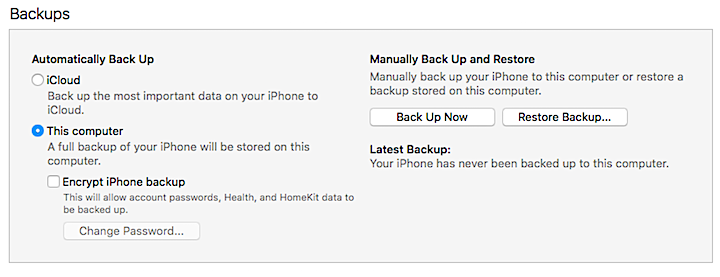
Using MacOS Mojave or before:
- Open iTunes and connect your device to your computer with a USB cable.
- If you lot are asked for your device passcode or to Trust This Estimator, follow the onscreen steps.
- Select your device on your computer.
- Click Back Up Now.
- When the process ends, you'll see that the backup finished successfully because y'all'll exist shown the date and fourth dimension of your last fill-in.
As with iCloud backup, there are a few limitations y'all should exist aware of with iTunes backup. Some information isn't backed upward, by design:
- Content from iTunes and App Stores, or PDF files downloaded to iBooks.
- Imported music synced from iTunes on the computer, videos, books, and photos.
- Photos already stored in the cloud via iCloud Photograph Library and My Photo Stream.
- Touch ID and Apple Pay settings.
- Activity, Wellness, and Keychain data (passwords), unless you select "Encrypt iPhone fill-in."
Again, almost of these limitations make sense—you can re-sync the content you demand and some stuff needs to be excluded as a matter of security.
Once you lot're done, iTunes maintains a re-create of that fill-in, which you can restore if you ever need to. You can read about how to restore from a backup in the section below.
The added benefit from connecting your iPhone or iPad to your Mac or PC using iTunes is that when you lot back up that Mac or PC, you lot will also back up the contents from your iPhone or iPad.
How to Support an iPhone to a Mac
- Using macOS Catalina or later, open a Finder window and connect your device to your calculator with a USB cable.
- If yous're asked for your device passcode or to Trust This Calculator, follow the onscreen steps.
- Select your device on your figurer.
- If y'all'd like to back up the Health and Action information from your device or Apple Spotter, you need to encrypt your fill-in past selecting the "Encrypt local backup" checkbox, which volition require you to create a password.
- Select Dorsum Up Now.
- When the process ends, you'll see that the backup finished successfully because you'll exist shown the date and time of your concluding backup.
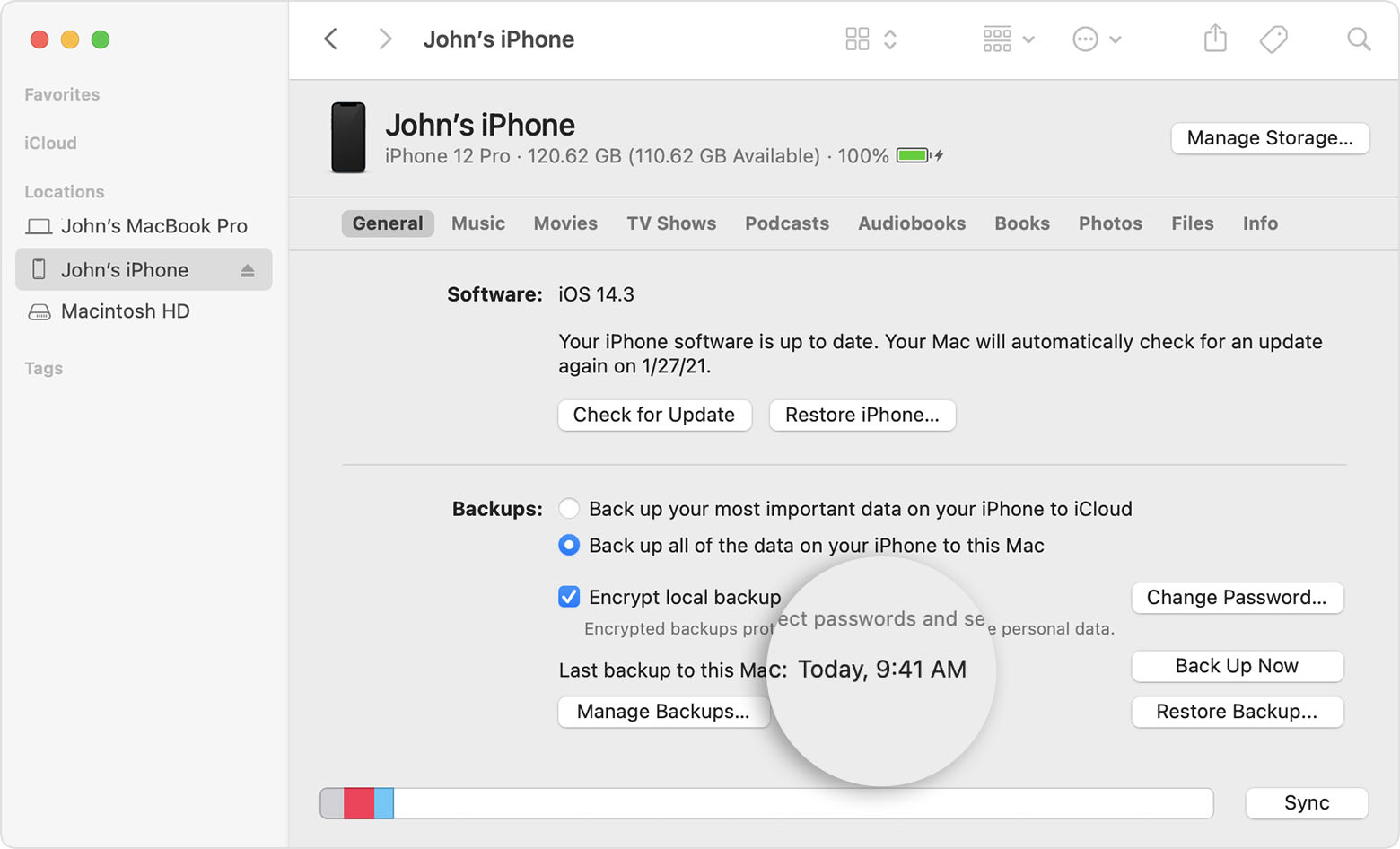
How to Back Up iPhone Contacts
To create a backup of your iPhone Contacts, your device needs to exist connected to Wi-Fi.
- First, get to Settings.
- Tap your name at the height, and so tap iCloud.
- Tap the slider for Contacts to switch it on.
- If prompted, merge your contacts with iCloud.
- Tap the iCloud Backup app at the bottom of the list and switch it on.
- Tap Back Upward At present.
What About iOS Backup Apps?
Instead of using iCloud or iTunes, you can utilize backup apps to back up the data on your iOS device. These types of apps can be helpful, but are usually express to bankroll up your photos and your contact listing. Other data, such as application information, game data, texts, voicemails, etc., is not typically backed upwardly by these apps. The virtually comprehensive way to dorsum up and restore the data on your iPhone is to use either iCloud or iTunes, or both.
The 3-2-1 Fill-in Strategy
Ideally, you should utilize both iCloud backups and periodic estimator backups to brand sure you have at to the lowest degree 2 ways to restore your iPhone or your iPad if you need to. And if you lot're a Backblaze Figurer Backup user, all the improve. Backblaze backs upwards the contents of the arrangement directory where your backups are kept, so if you're using iTunes or Finder and Backblaze, you tin be certain your iPhone data is safe.
Here's the bottom line when it comes to your mobile device's data: You don't want to take any chances. Make certain to have at to the lowest degree two backups: One local, through iTunes or Finder, and i in the cloud—either with iCloud Backup or using Backblaze.
The combination of iCloud backups, iTunes or Finder backups, and Backblaze provides you lot with a foolproof way to go along your mobile information condom and sound. For more on how to keep your information safe, read well-nigh the 3-ii-ane backup strategy, which we think is the best way to make certain your data is rubber.
How to Restore Your iPhone From a Backup
In example of data loss, or if you'd like to take the data you backed upward from an erstwhile iPhone on a new 1, you can restore your data backup to your device. Depending on the method you used to back up your device data, there are a few different options for restoring from a PC or Mac running macOS Mojave x.14 or earlier, a fill-in from a Mac running macOS Catalina 10.xv or afterwards, or an iCloud fill-in.
How to Restore Data From a PC or Mac With macOS Mojave 10.14 or Earlier
- Open iTunes and connect your device to your computer with a USB cable.
- If you're asked for your device passcode or to Trust This Figurer, follow the onscreen steps.
- You should see an icon for your device appear in the bill of fare bar on the upper left side of the iTunes window. Click on it.
- Click on Summary, and so click on Restore Fill-in.
- Wait at the engagement of each backup and selection the 1 yous desire to restore from.
- Select Restore and wait for the restore fourth dimension to finish. If prompted, enter the countersign for your encrypted backup.
- Continue your device connected until after information technology restarts and syncs with your estimator. Once the sync is done, you can disconnect your device.
To restore data from a Mac with macOS Catalina 10.15 or later, follow the same steps above in Finder.
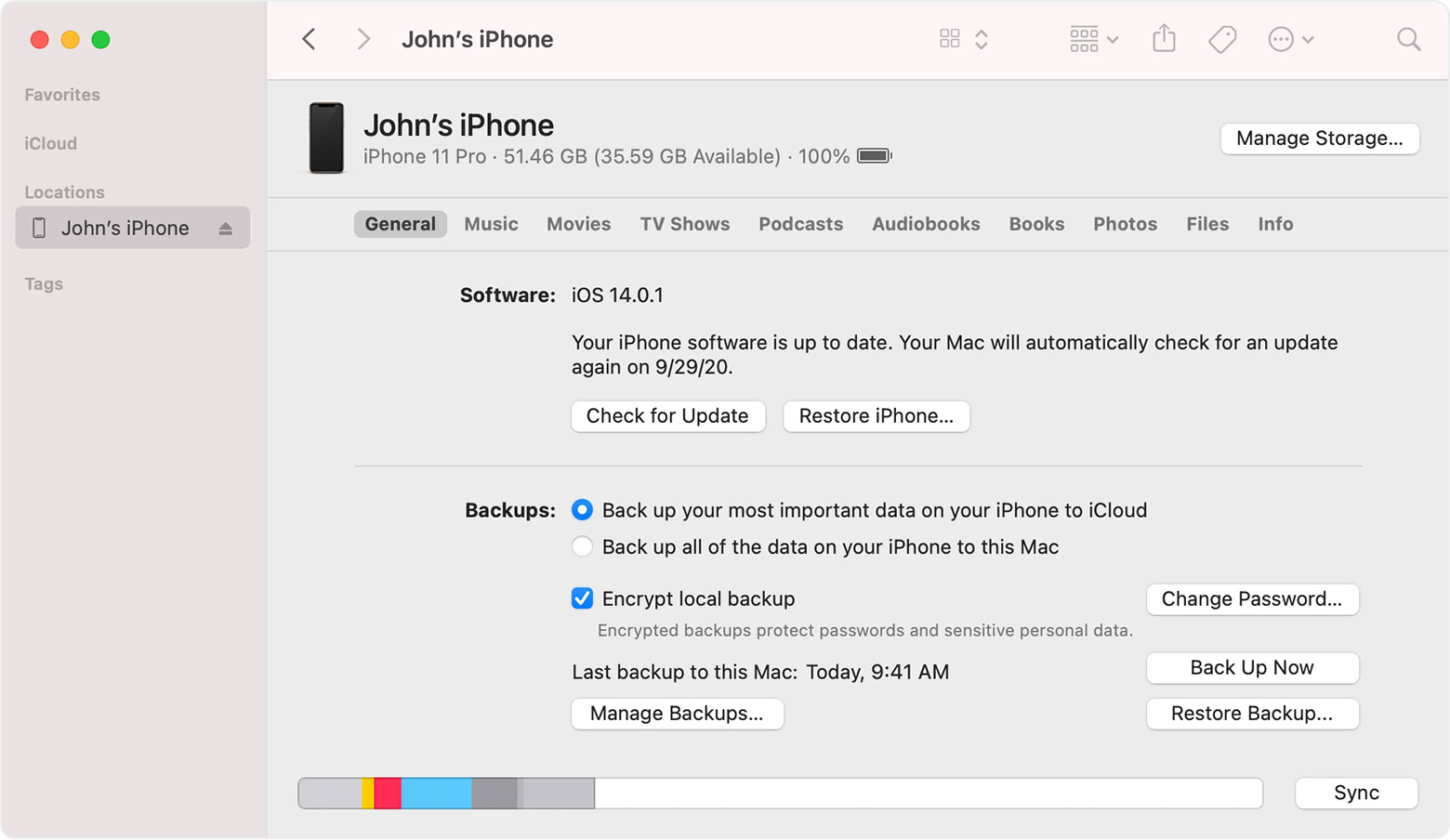
How to Restore Data From an iCloud Backup
To restore from an iCloud backup, y'all need to erase all of its content if y'all have already ready the device, or start from a new device before yous can utilise these steps.
- Showtime, switch on your device.
- Follow the setup steps until y'all get to the Apps & Data screen, then choose Restore from iCloud Fill-in.
- Sign in to iCloud with your Apple ID.
- Select a backup. In one case yous choose a backup, the data transfer starts.
- Once prompted, sign in with your Apple tree ID to restore your apps and purchases. You won't exist able to use your apps until you sign in.
- Keep your device connected to your Wi-Fi network and wait for a progress bar to appear and complete the data transfer. Depending on how much data you have to back up as well as your network speed, information technology might have a few minutes to an hr to consummate. If you disconnect from your Wi-Fi network before it finishes, the data transfer volition pause until you lot reconnect.
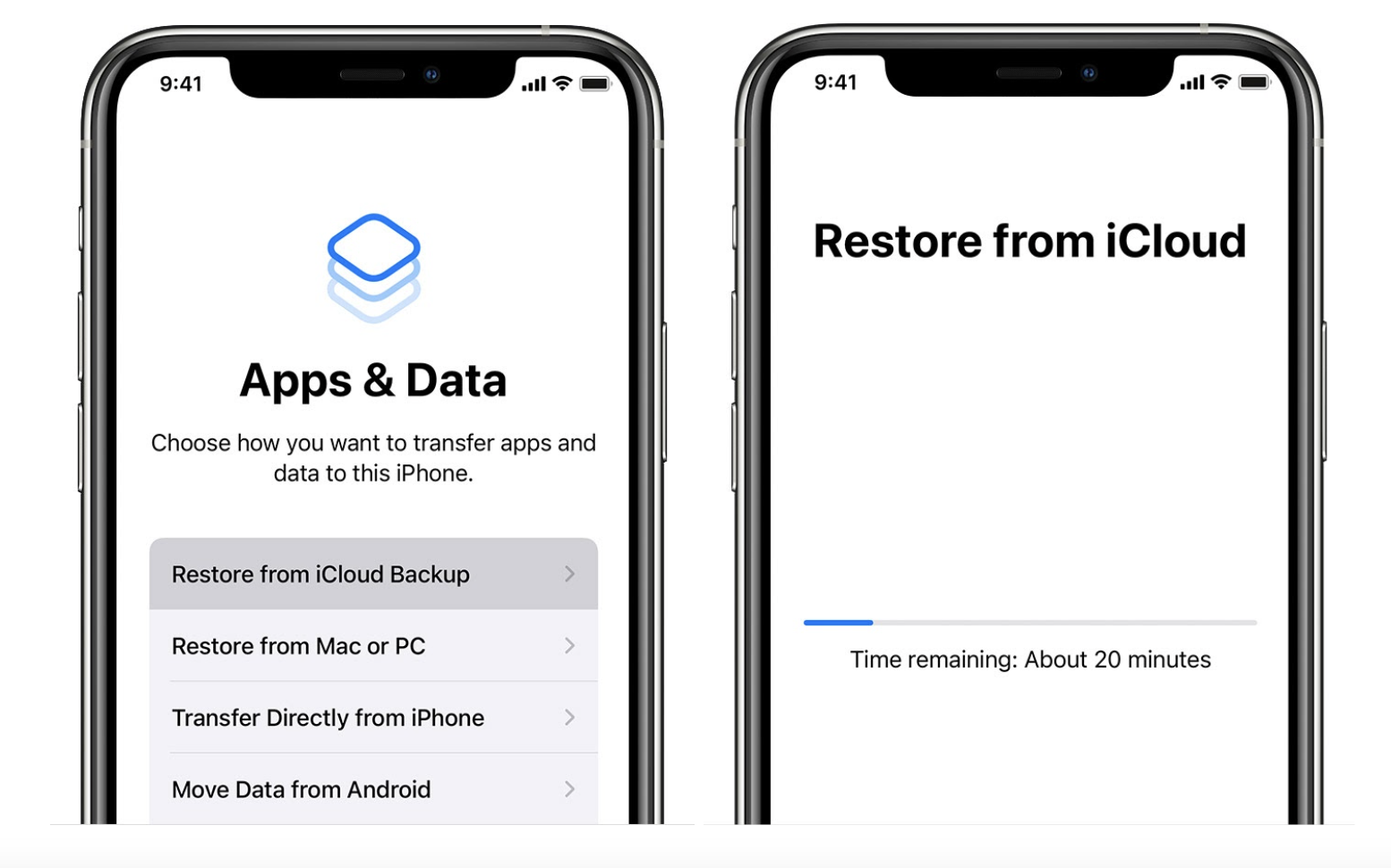
Keep Your iPhone Information Safe in the Cloud
Hopefully this has helped demystify what iCloud Fill-in and iTunes are doing to keep your mobile data rubber, and what else you lot can practise to make sure you lot're protected. Still confused? Have a question? Or, do you use a different strategy that you'd like to share? Let usa know in the comments.
Source: https://www.backblaze.com/blog/how-to-backup-iphone-and-ipad/